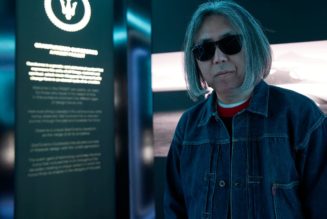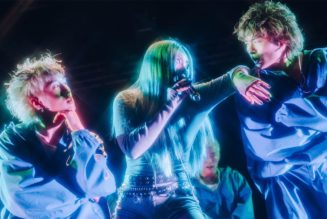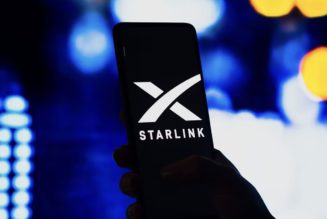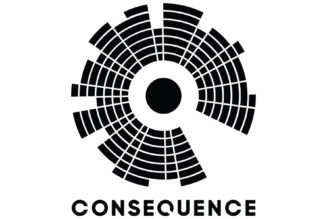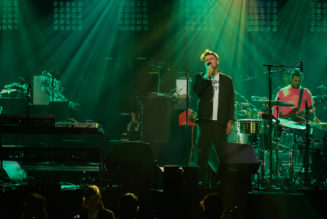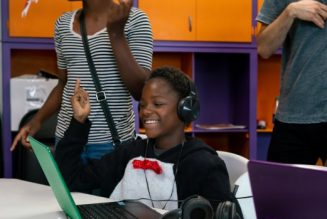A new study by United Talent Agency IQ, SightX, and Commune revealed that 96% of consumers will attend a live event in some way once it is fully safe to do so. 3 in 4 are most excited to return to sporting events, concerts, and movie theaters.
United Talent Agency, SightX, and Commune conducted a quantitative study among 1,000 U.S. consumers from ages 18 to 54—a group spanning more than 150 million in size—to better grasp the population’s entertainment consumption patterns during COVID-19. The discoveries from the study will allow the entertainment industry to curate events that will better coexist physically and virtually.
The study revealed that consumers have adapted to virtual events over the last 16 months. Now that in-person events are returning, the expectation for innovation for virtual events is higher. The production and intimacy that are experienced during a live event aren’t the same, and consumers want these experiences to be as memorable to one another as possible.
“Blend the real world with the digital world to enhance the experience,” says one respondent. “This could be everything from deepening the experience with social media to augmented reality/virtual reality.”
In addition to the heightened innovation and options for virtual experiences, consumers also expect to interact with talent more deeply. According to the study, the number one reason that consumers followed a celebrity or influencer on social media during the pandemic was because it motivated them. This celebrity-fan relationship also incrased the expectations for community building. “1 in 5 say celebrities/influencers will need to connect their fans/bring together a community,” reads the survey.
The inside glimpses of celebrities’ lives on social media highlighted a realization for consumers—1 in 5 have recognized that celebrities and influencers aren’t that different from them. Platforms like TikTok and Instagram gave stars like Jason Derulo and Leslie Jordan a tool to share enticing stories, become more relatable, and build an engaged community. These celebrities have opened the door to their lives, but fans and users on social media are expecting more:
- 1 in 4 have become more interested in everyday moments from celebrities/influencers
- 1 in 5 have felt closer to celebrities/influencers during COVID-19
- 1 in 3 believe celebrities/influencers will need to be more transparent with their fans
- 1 in 4 think celebrities/influencers will need to be more accessible to their fans
With the expansive growth of social media during the course of the pandemic, the study claims 49% intend to use social media after COVID-19 than they did before the pandemic. Furthermore, social media will be more important post-pandemic than it was pre-pandemic.
“I used social media for almost everything before COVID-19, but over the past year, it made life more bearable and allowed me a ‘virtual’ life that ultimately crosses over into ‘real life,’” said one survey participant.
The study also highlights Max Greenfield and Anthony Hopkins’ social media growth during the pandemic. Greenfield’s social media following grew by 85% due to his parenting content. He shared hysterical videos of him attempting to help his preteen daughter with her homeschool assignments. 83-year-old Hopkins’ social media following grew by 80% because he showcased off his quirky personality—a stark contrast from his days portraying Hannibal Lecter. He joined TikTok and posted a video doing the viral “Toosie Slide” challenge.
This explosive social media growth will not inhibit the want or need to attend live shows. The study found that the pandemic has made live events more meaningful and sought-after. Additionally, 1 in 4 will cut back on spending in other areas to attend more live events.
Bad Bunny’s El Último Tour Del Mundo and Travis Scott’s Astroworld sold out in record-breaking times. “For a population seeking closer connections to the entertainment and talent they love, perhaps being present physically at a live event is the purest expression of the intersection of intimacy and community they desire,” states the survey.
Newer forms of live events like esports and podcast tapings have become increasingly more popular in a landscape where sporting events, concerts, and movies at theaters are the pillars of live entertainment. The others listed in the survey are cultural festivals (food, drinks, art), comedy shows, music and festivals.
“Nothing can beat a live show with thousands of other people,” stated one respondent. “It’s the energy and the raw emotion you get from a live concert that can’t be replaced.”
Consumers want community and sensorial benefits to be prioritized for live events. 1 in 4 would go to a live event in-person to meet new people. 1 in 5 would go to a live event to have a more multi-sensory experience. While virtual events haven’t replaced what “normal” is for consumers, they will be more supplemental to live events in the future.
“I can’t wait to go to concerts again to feel the bass of the loudspeakers in my chest, drink with friends, and hear everyone cheering and singing,” said one participant.
Consumers don’t intend to stop attending virtual events. In fact, 88% who participated in a virtual event during COVID-19 will continue when in-person events return. These virtual events have the benefits of reaching audiences that aren’t able to attend in-person and provide consumers with the option of attending an event from the comfort of their own home. UTA’s David Zedeck said that livestreaming will be a “virtual balcony,” and a number of companies, like Spotify and Warner Music Group, have invested in digital music experiences.
“I think we’ll see significantly more digital events in the future,” stated one respondent. “There was never such a need for them before, but now that people have seen the benefit, I can imagine a future where it’s more common.”
Music festivals, gaming, and music performances are the most in-demand virtual experiences. Even though one will be able to attend an event in-person, at least 50% of them will continue attending events virtually. Gen-Z are the most likely to attend music and gaming events virtually. Their virtual attendance preference is for a number of reasons:
- To avoid crowds
- To experience it comfortably
- To experience an event I would not have access to in my region
- To spend less money than going in-person
- To explore an event I’m casually interested in
“I would like to see virtual options for more events post-pandemic,” said one participant. “COVID-19 made me reconsider accessibility and I hope organizers have realized how much wider their audiences can be without physical or geographic limitations.”
Since today’s fans aren’t satisfied with being passive consumers, a key aspect in virtual events is the interactivity amongst the participants and hosts. This live and active interaction wouldn’t happen during a live event. Fans are much more interested in being active in a chat during a virtual event, and 1 in 5 would choose to attend a virtual event post-pandemic in order to actively engage with the live event (like participate in a chat, vote, etc).
“My favorite part about virtual events is how easy it is to interact with the artists,” says one participant. “They often take song suggestions, which would probably never happen to the same extent at a concert.”
The pandemic has shown us that the physical and virtual worlds are closer to one another than ever before. It’s up to celebrities, promoters, venues, and the like to innovate and make both their experiences as unforgettable online as they would in-person.
“As ‘real-life’ reemerges, consumers are roundly rejecting a binary choice between virtual and live entertainment,” said Joe Kessler, Global Head of United Talent Agency IQ. “Much like hybrid work, consumers are demanding a ‘best of both worlds’ approach to their entertainment choices. Consumers are enthusiastic about returning to live experiences, but they also are unwilling to give up the enhanced virtual experiences that helped get them through the pandemic. Those who see a zero-sum game are missing the ample opportunities ahead if you listen to consumers and their increasingly discerning expectations for both virtual and IRL entertainment.”



